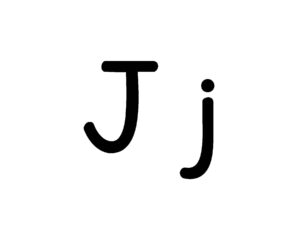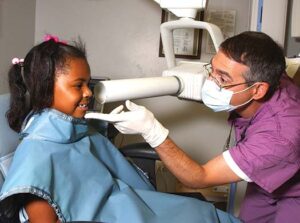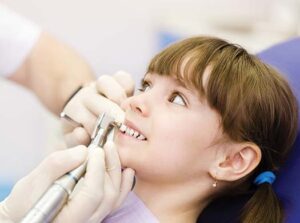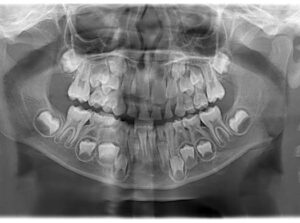Oral language, Letter knowledge
Children will interpret information presented in a book read aloud and increase the number of novel words they understand. Children will also identify and say the sound of the letter J.


New:
Review:
Be Prepared: This is the third of three repeated readings of a book with children. Today’s session focuses on children’s interpretation (explanations, reasoning) of information presented in the book. The session also will help children understand more novel words. From the list of novel words you identified prior to your first reading of the book, select 2–3 words to define for children today. See the Language/Literacy section of the ELM User Guide: 3–5 Years for additional information on how to select and define novel words.
[Display letter J card.]
What is the name of this letter? What sound does the letter J make?
Letter J says /j/, just like in “jungle.” /j/, /j/, jungle. Let’s together say /j/, /j/, jungle.
Now let’s spend some time with our book.
[See Week 3, Day 5 of Language/Literacy for a description and examples of how to approach today’s book reading. Key aspects are summarized below:
Number knowledge
Children will practice adding and subtracting.


Review:
We are learning more about how to add and subtract. What happens to our group when we add more items? (it gets larger) What happens to our group when we subtract items? (it gets smaller)
We practiced adding by playing a game called Animal Spots. We rolled dice and added both dice together. Then we placed the same number of spots on our animals.
Let’s practice adding as we use our fingers. Please hold up four fingers on one hand and five fingers on the other hand. Now let’s add the fingers on both hands to see how many fingers we have all together.
Let’s start with our larger group of five fingers and then count on as we add our group of four fingers: 5, 6, 7, 8, 9.
How many fingers do we have all together? (nine)
This week we used ourselves to practice adding and subtracting. Let’s try it again.
[Invite two boys and three girls to the front of the group.]
Let’s first add our group of boys and our group of girls together. We will count on as we begin with our larger group of three girls: 3, 4, 5.
How many children are in our group all together? (five)
Let’s subtract two girls from our group.
[Invite two girls to sit down.]
We had five children in our group and we subtracted two children.
How many children are left in our group? (three)
We also practiced subtracting by playing a game with 10 circles and a die. Let’s practice subtracting again.
[Roll a large die and count the number of dots on the face of the die. Then subtract the same number of counters from a group of 10 counters.]
How can we find out how many circles are left in our group? (count the number of circles left)
Let’s count the number of circles we have left.
[Lead children in counting the number of counters left as you point to each one.]
How many circles do we have left in our group? We have __ circles left after we subtracted __ circles.
This week we practiced adding and subtracting while playing games and counting groups of children.
Extra support
For children who have not yet mastered addition and subtraction, offer examples with smaller groups.
Enrichment
Invite three children to hold up a number of fingers on one hand. Encourage other children to add the three small groups together.
In the housekeeping center, invite children to place a number of food items on a plate and then pretend to eat some as they subtract the “eaten” items from their plate. Encourage children to then determine the number of food items left on the plate.
Take children on an addition walk. Add as you observe things around you. Example: “I see four trees in that yard and two trees in the other yard. How many trees are there all together?”
Good health practices
Children will understand the importance of going to a dentist to keep our teeth healthy.


New:
Review:

Let’s all give each other a big smile!
[Encourage children to smile broadly so teeth are shown.]
We use our teeth many times a day. We can take good care of our teeth by going to a dentist and by brushing our teeth. A dentist helps us have healthy teeth. A dentist does a checkup of our teeth to make sure they are growing the way they should. We learned about checkups yesterday when we talked about going to a doctor. A dentist can also fix problems we may have with our teeth. Most dentists have helpers who can clean our teeth.
What happened the last time you went to a dentist?
[Encourage children to describe experiences, especially procedures or tools that are discussed below.]
A dentist checks our teeth to make sure there are no cavities. We know that a cavity is a little hole in a tooth. A cavity makes a tooth weaker. We might get a cavity if we do not carefully brush dirt off of our teeth. We get dirt on our teeth when we chew things.
If we have a cavity, a dentist will clean out the hole and fill the hole so it does not get more dirt in it or get bigger.

[Display picture of dentist taking an X-ray of child’s teeth.]
We learned yesterday that sometimes a doctor takes a picture of part of the inside of our body. This is called an X-ray. A dentist can take pictures of our teeth. The pictures tell the dentist whether our teeth are growing the way they should.
Our picture shows a dentist taking an X-ray of a child’s teeth. The X-ray machine is used on the outside of our mouth. An X-ray does not hurt.
Have you ever had an X-ray done of your teeth? Tell us about it.
An X-ray machine is one of the tools used by people in a dentist’s office. A small mirror is another tool used at a dentist’s office. A dentist and a dentist’s helper use a small mirror to look carefully at our teeth. A mirror helps people at the dentist’s office look closely at the back side of our teeth.
[Display picture of child having teeth cleaned.]

Usually we get our teeth cleaned when we go to a dentist’s office. A special toothbrush is used to clean our teeth. The brush spins fast but it does not hurt. This special brush gets our teeth clean and shiny.
We go to a dentist to make sure our teeth are healthy. A dentist may take an X-ray of our teeth. We can get our teeth cleaned at a dentist’s office. We also clean our teeth.
Extra support
Enrichment

Provide available props for dramatic play focused on the work of a dentist’s office. Provide materials, such as latex gloves, masks, clipboards, old teeth X-ray films, exam and waiting room, set of plastic teeth, small non-breakable mirror, and other items to promote dentist-related play.
A local dentist may be able to provide child-friendly educational materials to share with children. Older children in your setting may like to describe their experience in losing a tooth.
Understanding TIme
Social Studies
Skill and Goal
Concepts of time
Children will understand some ways to learn about things from long ago.
Materials
Needed
*Printables provided
Key
Concepts
New:
Museum
We are learning many things about how people lived long ago. Today we will think about how we can learn more about things from long ago.
What kinds of things have we done to learn about how people lived long ago? (read a book, played games)
There are some other things we can do to learn about how people lived long ago. We could talk with an older person about what it was like to grow up long ago. We could look at pictures of things from long ago. We also could visit a museum that has things that were used long ago. A museum is a building where art and other important items are kept and displayed for people to see.
We first need to ask a question when we want to learn about something. Today let’s ask this question: How did animals help people live long ago?
The book we read last week can help us answer our question about how animals helped people live long ago.
[Display book illustration of two horses (mustangs) pulling the wagon.]
Here is a picture of the two horses we read about last week. How did the horses help Laura’s family move to the prairie? (they pulled the wagon)
The book told us that the horses pulled the family’s wagon through the prairie grasses. There were no roads or paths for the horses to follow.
We know that pictures can tell us about how people lived long ago. Let’s look at some pictures of animals from long ago to find some answers to our question. Remember, our question is: How did animals help people live long ago?
[Display one at a time, the two pictures of animalshelping people long ago.]
How are the animals shown in these pictures helping people? (helping to plant a field, helping to pull a wagon)
Now let’s look at a picture of an item from long ago that is displayed in a museum. Remember, we can learn about things from long ago by visiting a museum.
[Display picture of a covered wagon.]
The wagon shown in this picture is now in a museum for people to see. We know that animals helped people long ago by pulling wagons.
Today we talked about some ways to learn about things from long ago. We asked a question: How did animals help people live long ago? We answered our question by using a book and some pictures of animals long ago. We also looked at a picture of a wagon from a museum.
Scaffolding Tips
Extra support
Enrichment
Ask children what it would be like to live long ago without horses. How could Laura’s family have moved to the prairie? How could a family plow the fields?
Center Activity
Provide *pictures used during the activity and books with old photos. Encourage children to investigate pictures and items and compare them to how things look and work today. You may also wish to encourage children to make a log house out of craft sticks.
*Printables provided
Family Child Care
If you have access to the Internet, invite children to watch part of a Little House on the Prairie episode. This program is a good way for children to learn about life in part of the United States during the 1800s. Another option is to secure illustration-rich children’s books from your local library about life in an earlier era. Example: Children of Long Ago by Lessie Jones Little.